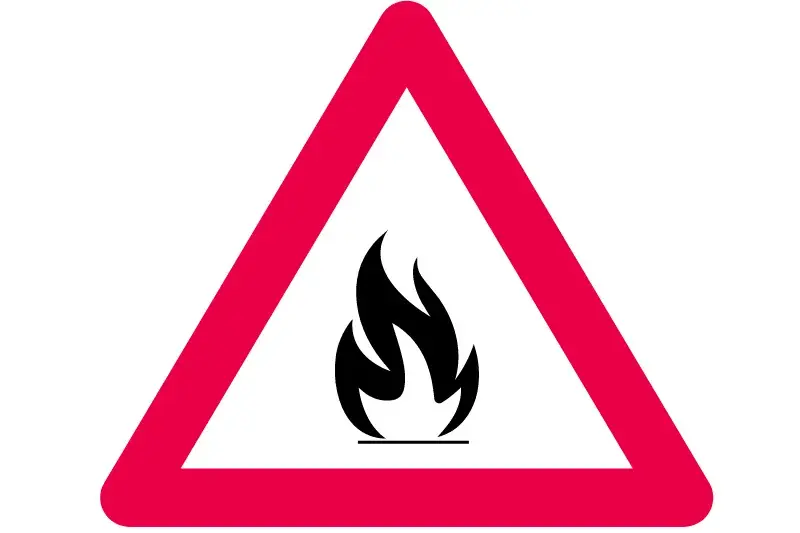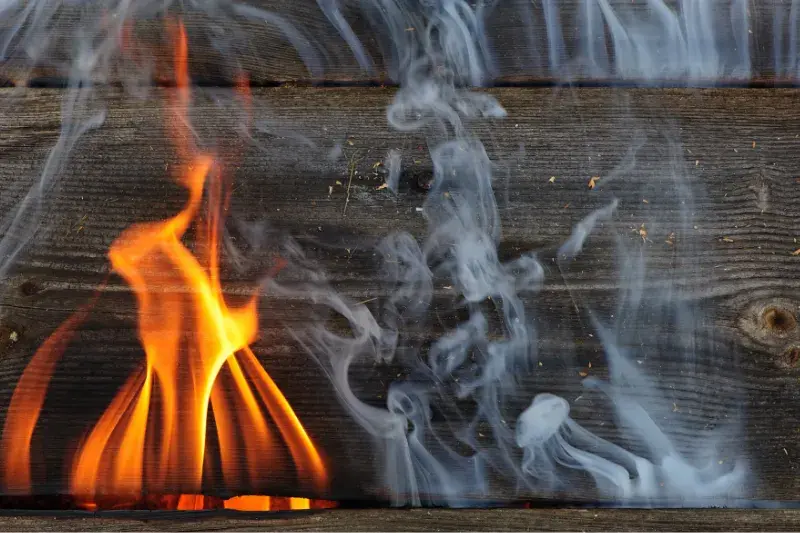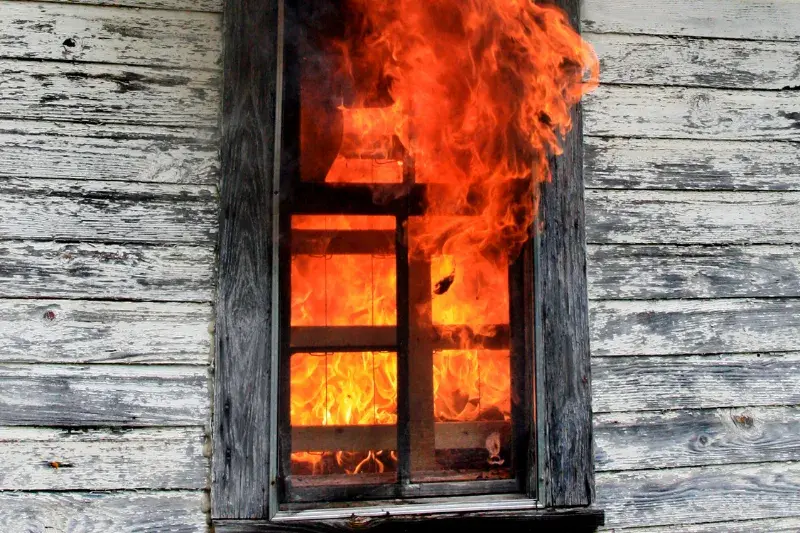The fire resistance classes provide information about the fire behaviour of a component or building material. Based on the classification in a fire resistance class, it is clear how long a fire door, a fire protection wall or a cable bulkhead, for example, retains its functionality in the event of a fire.
Specifications for fire resistance classes

The individual specifications for the components and building materials to be used in a building are defined in the fire protection concept and must be adhered to for successful building acceptance. The classification in the fire resistance class is regulated for Germany in DIN 4102-2 (Reaction to fire of building materials and components) and at European level in DIN EN 13501-2 (Classification of construction products and construction methods for their reaction to fire). Both standards are valid. If you have any questions about the fire resistance classes, please contact us.
Classification of fire resistance classes according to DIN 4102-2
Example specification of fire resistance class: F30 / F60 / F90
The fire resistance class takes into account the three performance criteria load-bearing capacity, room closure and thermal insulation together. In the German standard DIN 4102-2, the fire resistance class is abbreviated with a letter such as "F". The number behind the F is the minimum number of minutes in which the functionality of the component can withstand at least. At F30 it would therefore be a fire resistance duration of 30 min. The fire resistance class is available in the following time stages: 30, 60, 90, 120 and 180 minutes.
Fire resistance class addition to the building material class
The fire resistance class can be extended by additions of the building material class and provides information about the fire stress (regulated in DIN 4102-1):
- A = non-combustible building material (e.g. sand, clay, gravel, cement, clay)
- B = combustible (e.g. hardwood, paper, straw, wood wool)

Fire resistance classes Table according to DIN 4102-2
Depending on the component, the fire resistance class is provided with its own code letter. The fire resistance class table according to DIN 4102-2 provides an overview.
| Letter of fire resistance class | Component |
|---|---|
| F | Walls, ceilings, columns, stairs |
| G | Fire-resistant glazing, windows |
| I | Installation shafts and ducts |
| K | Barriers in ventilation pipes |
| L | Ventilation ducts and pipes |
| S | Cable Barriers |
| T | Fire protection closures such as fire doors, gates and roller shutters |
Classification of fire resistance classes according to DIN EN 13501-2
Example specification of the fire resistance class: REI 30 / RE 60 / I 90
The European standard DIN EN 13501-2 distinguishes the fire resistance class more differentiated and considers the three performance criteria individually:
- R = Load-bearing capacity
- E = Room closure
- I = Thermal insulation under fire
In addition, only in the European standard, there are other fire resistance classes:
- W = radiation passage
- M = impact
The number behind the letters represents the number of minutes in which the part retains its functionality. In DIN EN 13501-2, however, the time stages are more specific. 15, 20, 30, 45, 60, 90, 120, 180 as well as 240 minutes of fire resistance are possible.
Fire resistance classes Table according to DIN EN 13501-2
The fire resistance class can be indicated by additional performance criteria. The fire resistance classes table according to DIN EN 13501-2 gives an overview.
| Letter of fire resistance class | Performance criterion | Description |
|---|---|---|
| C | Self-closing property | Stability under shock stress |
| E | Room closure | Prevention of fire and gas penetration |
| I | Thermal insulation under fire | Limiting the transfer of heat to the side facing away from the fire |
| M | Mechanical stability | Resistance to mechanical stress, e.g. due to an impact |
| P | Energy supply | Maintaining the power supply of electrical cables |
| S | Smoke permeability | Limitation of smoke permeability, e.g. in ventilation flaps or noise protection doors |
| W | Thermal radiation | Limitation of the passage of thermal radiation to the side facing away from the fire |
Example of evaluation of performance criteria
The difference in classification in a fire resistance class between the two standards can be clearly illustrated with an example: If a fire protection ceiling remains stable for up to 80 minutes in the event of a fire, it can be designated according to European standard with the abbreviation R60 (load-bearing capacity for 60 minutes), even if the room closure gives up after 55 minutes and the thermal insulation after 40 minutes. If load-bearing capacity (R) and room closure (E) are assessed together, the (European) fire resistance class RE 45 applies. And if thermal insulation (I) is also taken into account, the fire resistance class REI 40 results. According to the German standard, only the classification F30 would be permissible here.
Would you like to renovate a building and need support in fire protection? Write to us.

Fire resistance classes and technical classification
The topic of fire resistance classes also includes the technical classification of components and building materials such as fire-retardant. In the State Building Code (Landesbauordnung/LBO), the fire protection requirements for a component and building material are defined by the building class. The building classes differ in the type of building and height (see blog article Building classes and special buildings).

The fire resistance classes can be assigned to these German building authority requirements:
| Technical classification | Fire resistance class according to DIN 4102-02 | Duration of functionality in case of fire |
|---|---|---|
| Fire retardant | F30 | Fire resistance up to 30 minutes |
| Highly fire retardant | F60 | Fire resistance up to 60 minutes |
| Fire-resistant | F90 | Fire resistance up to 90 minutes |
| Highly fire resistant | F120 | Fire resistance up to 120 minutes |
| Top Highly fire-resistant | F180 | Fire resistance up to 180 minutes |
The issue of fire resistance class is more complex than it appears at first. We work according to both standards, depending on how the fire protection concept sets the specifications. If you want to build or renovate a building, we will be happy to support you in its execution.
Conclusion on the fire resistance classes
Both standards are valid. The European standard is much more detailed than the German standard.
German standard DIN 4102-2 | European Standard DIN EN 13501-2 | |
| Time stages | 5 | 9 |
| Performance criteria | 3 pieces, but combined | 5 pieces, are considered individually |
| Evaluation of performance criteria | All 3 criteria must be met | Performance criteria can be assessed separately |
If you have the choice, the European standard gives you more flexibility in fire resistance classes, even if the European standard is a bit more complex. In addition, it can be assumed that the European standard will replace the German standard in the future.
